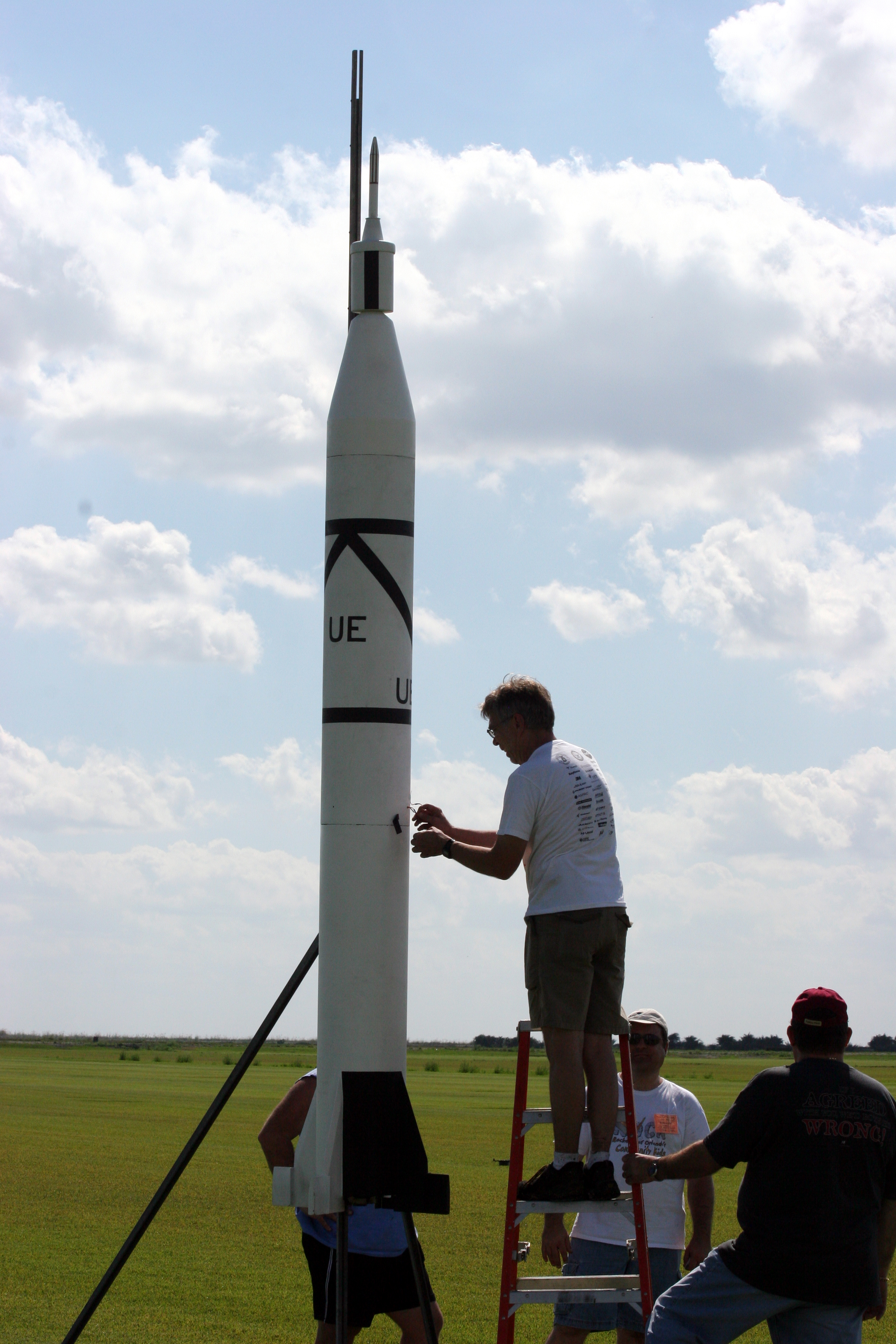Sport RocketryHistory of Sport RocketryShortly after the launch of Sputnik in 1957, amateur rocketeers began building their own rockets - sometimes with disastrous results. Stine, an engineer at White Sands Proving Grounds, wrote an article for Popular Mechanics magazine asking what could be done to prevent kids from hurting themselves trying to build their own rocket motors. Carlisle provided the answer. Carlisle sent Stine a package containing a few small rocket motors. He described how these motors could be commercially manufactured and used to launch home-built rockets safely. Stine formed Model Missiles, Inc. which sold motors manufactured by Carlisle as well as kits such as The Rock-A-Chute. Carlisle was not able to keep up with the demand for motors, so Stine turned to Vernon Estes. Estes had experience in manufacturing and created an automated process for making rocket motors. Estes formed Estes Industries which is now the largest manufacturer of model rocket motors and kits.
Model Rocket Motors It's the pre-made rocket motor that makes model rocketry a safe and inexpensive hobby. A model rocket motor includes a nozzle, propellant, a delay element, and an ejection charge inside a cardboard tube.
It's the pre-made rocket motor that makes model rocketry a safe and inexpensive hobby. A model rocket motor includes a nozzle, propellant, a delay element, and an ejection charge inside a cardboard tube.
The model rocket motor is ignited electrically. As the propellant burns, hot gases rush out of the nozzle propelling the rocket in the opposite direction. After the propellant is exhausted, the delay element begins burning. The delay element produces more smoke and less thrust than the propellant. This allows the rocket to coast to its maximum altitude before the ejection charge is ignited. The ejection charge bursts through the retainer cap pressurizing the rocket's body tube to deploy the recovery device (usually a parachute).
Mid- and High-Power RocketryThrough the years, model rocketry evolved into sport rocketry which encompasses model rocketry, mid-power rocketry, and high-power rocketry.Low-power rockets (model rockets) are small, weighing no more than one-pound. Mid-power rockets generally weigh between one and three pounds. High-power rockets weigh three pounds or more. Often they weigh much more than three pounds.
Motor SizesRocket motors are labeled using a single letter to indicate the overall power (total impulse) of the motor. The smallest rocket motors are labeled as A motors. An A motor has up to 2.5 Newton-Seconds of total impulse. B motors have twice the total impulse of A motors (2.5 to 5.0 Newton-Seconds). C motors have twice the total impulse of B motors, and so on.Model rockets are typically flown with A through D motors. Mid-power rockets usually use E, F or G motors. High-power rockets typically use H through M motors, though some hobbyists have flown N, O, and even P or larger motors. An amateur high-power rocket using an S motor was launched into space on May 17, 2004. The CSXT GoFast rocket reached an altitude of 72 miles.
Payload BayThis web site, PayloadBay.com, was created primarily to document my own rocketry projects. I am Roger Smith. I'm member of the National Association of Rocketry and Tripoli Rocketry Association as well as two rocketry clubs, Rocketry of Orlando's Community Kids and the Northeast Florida Association of Rocketry.
In addition to rocketry, I am interested in photography, so you will find that this site contains many photographs and videos of rockets and rocket launches. Some of the more interesting videos are the ones taken by video cameras I've flown aboard rockets. These allow you to see the flights from the perspective of the rocket.
 Onboard Video See Upscale Omega/Cineroc and Tikva: A New Hope for more onboard videos. I recently bought a camera which can record high-speed videos. This allows me to capture rocket launches in slow motion.
 Click to View Video See High-Speed Videos to view more high-speed videos.
AkavishThe rocket I have become most associated with in rocketry circles is the "Akavish" - a series of spider-inspired rockets. My wife, Bracha, and I have built several of the flying arachnids.
 "Akavish" Lift-Off The original Akavish was a small model rocket that did not fly very well. It's replacement stands about 18" tall and roars into the air on an Aerotech G38-4FJ single use motor. The "Black Jack" motor provides a column of thick black smoke.
 "Akavish" in Flight The latest member of the Akavish family is the Big Daddy Akavish. Standing about four-feet tall, he is a high-power rocket flying on an I, J, or K motor.
 Click Here to Watch Video To learn about our latest adventures in rocketry, please visit the PayloadBay.com Home Page to view the latest articles added to the site. Be sure to bookmark this site so you can come back to it later.
References:
|
